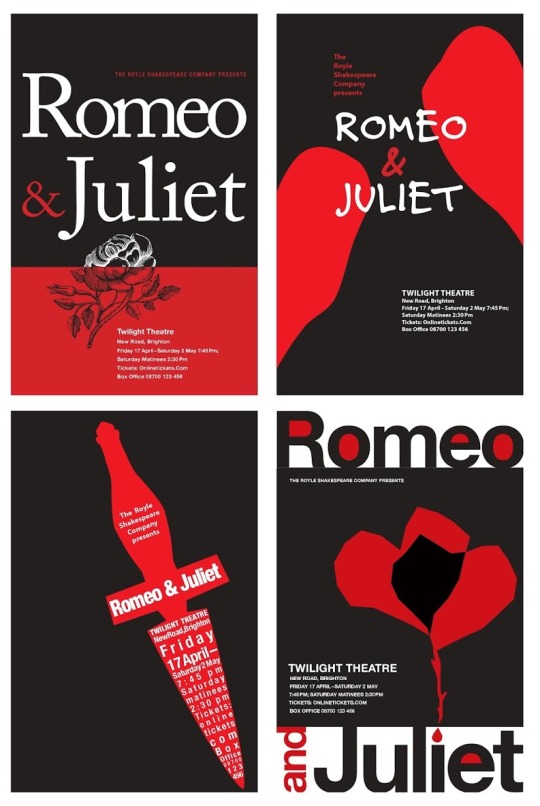#definingclientneeds
Explore tagged Tumblr posts
Text
Wk 1- Defining Client Needs
The key takeaways that will have the most impact on my experience as a graduate student are being able to connect with professionals that have similar goals that I do. Being able to reflect on the reading, assignments, and knowledge I will be digesting for my professional future. As well as learning from expert instructors who have the experience and training to guide me to where I want to be as a designer. Becoming a true master at design is my ultimate goal. Learning new technologies, techniques and methods are part of this master's journey.
Some questions or concerns that I have about the program that may impact my future success are whether or not this program will get me at the level I need to be at within a year? Will it connect me to the right people? Will my effort and hard work go unnoticed? Will, the amount of work needed to succeed in these classes, stress me out and lead me to be resentful of the field I've chosen? Some of these are just some of my worries, and luckily I can answer most. I know that this program is something you really have to be dedicated to. The style of learning that Full Sail online does entails a lot of independent studying and its something we as individuals make of it.
My vision and expectations of the MDMFA program are that I'm able to not only retain the information I learn but be able to apply it to my daily life to grow and expand as a designer. My expected level of commitment for this program is extremely high. This path is something I'm extremely serious and passionate about, and I plan to give my absolute all to this program. My long-range goals are to have enough experience to become a creative director ultimately and after some time open up my own agency where I can lead my own team of creative professionals.
0 notes
Text

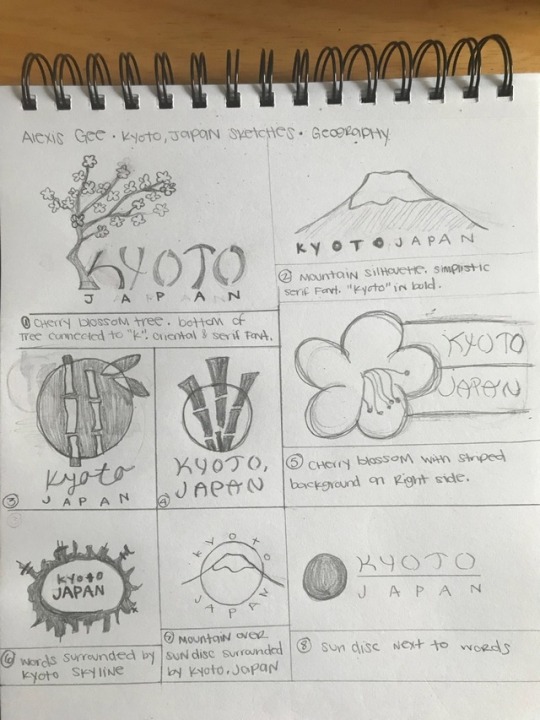
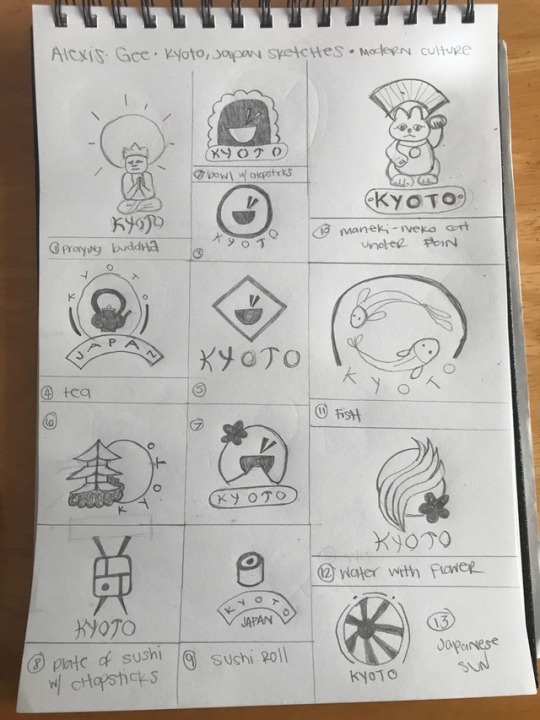
kyoto, japan sketches
0 notes
Photo
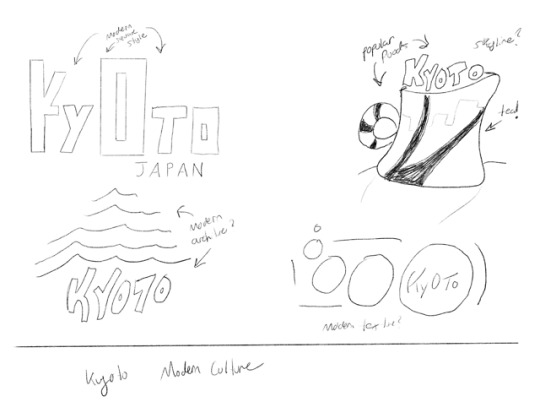
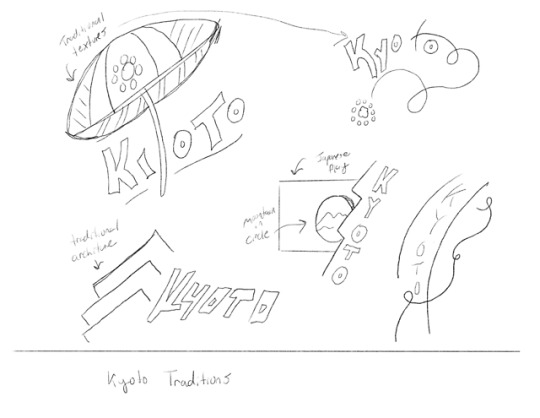
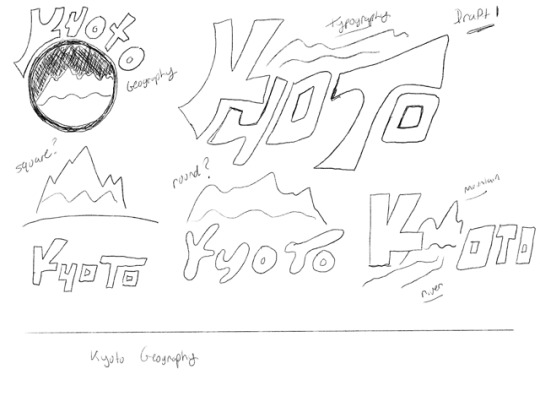
The attached sketches are what I did for this week’s logo research assignment in my Defining Client Needs class. I’ve received some incredible feedback over the past month which will help me go further with my final logo design for the city of Kyoto, Japan. One piece of feedback that really struck me as helpful was the important of using clean, straight lines in the second stage of sketch design. I didn’t go as far as I should have with my second set of sketches, and I could have benefited from creating a more detailed version of the design and the shapes that make it up. I’ll definitely work on this and will improve drastically at my next step of the design process.
0 notes
Text
Reflection: 2.4.3 Defining Client Needs
The Design Process:
Referencing O'Grady's diagrams (O'Grady, 2009, p. 68), the design process most resembled the second diagram. While the process was not as linear as the first diagram, it was not as overlapping as the second either. The lack of extensive overlapping as seen in the above diagram is due to the design stage not moving past the prototyping stage at this point.
The design process began with research on three cities: Kyoto, Japan, Reykjavik, Iceland, and Marrakesh, Morocco. The research was conducted to better understand each cities' traditions, history, geography, and modern culture. The focus was given, by the designer, to city features such as strength, character, and heritage. Various websites were delved into, researching information regarding each city and mind maps was created from the vast research. Words from the maps, which would translate visually, were highlighted for future reference.
One city was selected from the three to progress into concept development; Kyoto, Japan, was the chosen city. Before sketching began, research was conducted by the designer, to ensure design originality, regarding existing and previous logos for Kyoto. Sketches were created based on the highlighted keywords from the mind maps. Several iterations of sketches were completed based on Kyoto's traditions, geography, and modern culture. To further increase sketch iterations, further research was conducted by the designer, regarding typography. Iteration of the designs was created referencing the typography research.
After the graphic designer completed several iterations, the designs were submitted for peer review by fellow designers. Peers selected several designs to be further conceptualized with various iterations by the designer. The research was again conducted to seek information and inspiration regarding the creation of various iterations of the selected designs. After the design envelope had been pushed by the designer, with more iterations of the selected designs, the designer submitted the final sketches for review by the class professor.
References:
O’Grady, J. V., & O’Grady, K. (2009, February 1). 68. A Designer's Research
Manual: Succeed in Design by Knowing Your Clients and What They Really
Need. Retrieved May 22, 2018, fromhttp://ce.safaribooksonline.com/
9781592535576/68?reader=pf&readerfullscreen=&readerleftmenu=1
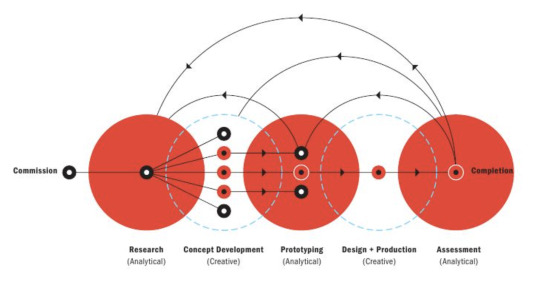
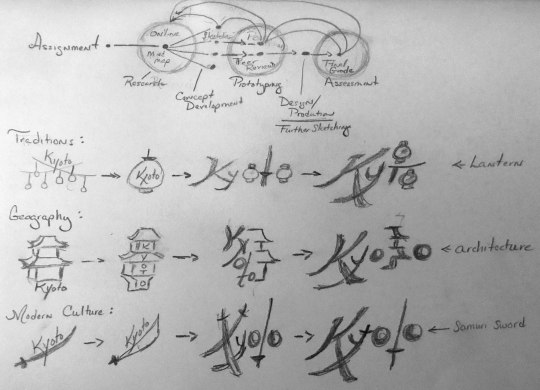
Feedback / Critiques:
The critique feedback that was received this month was valuable information. From the feedback that was given the designs were able to flourish into a more simplistic yet elegant style. The largest critique was regarding the number or iterations per design. Focussing on the strongest designs from each category as viewed by those giving the critiques, the designs were given further iterations in hopes of specifying the strongest design for each logo. Further iterations of architecture, dragons, bamboo, and manga were created.
Prior to the critique, the initial manga designs seemed to be the strongest designs. However, after the revisions that were created post critiques, the newer manga design now stands head and shoulders above the previous designs. After seeing the difference further iterations can make in the design process, this is something that will be implemented in future designs.
Taking what was learned in this course and what was garnered from the critiques, future designs will become stronger and more impactful due to the implementation of increased iterations of the strongest designs.
Mind Map & Original Sketches:
Kyoto, Japan: Geography
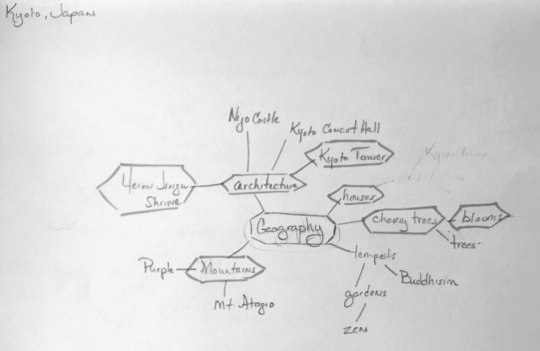
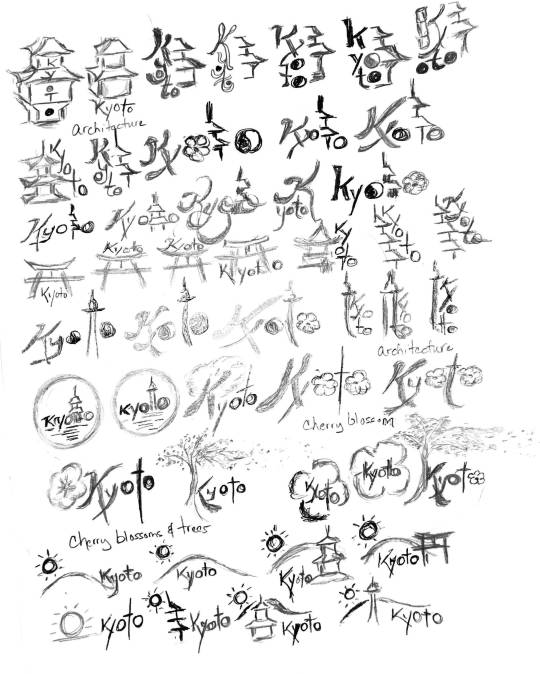
Sketch Revisions: Architecture
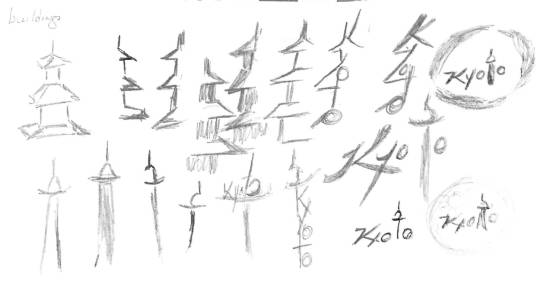
Kyoto, Japan: Traditions
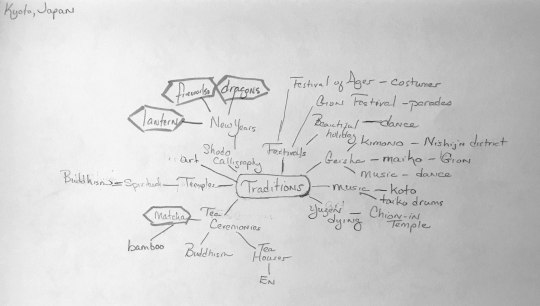
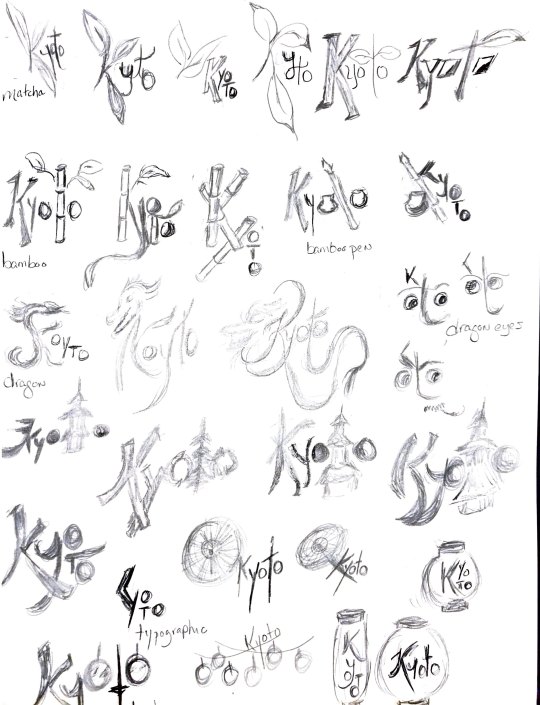
Sketch Revisions: Bamboo
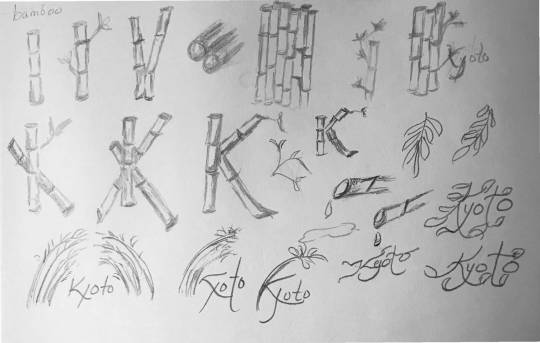
Sketch Revisions: Dragons
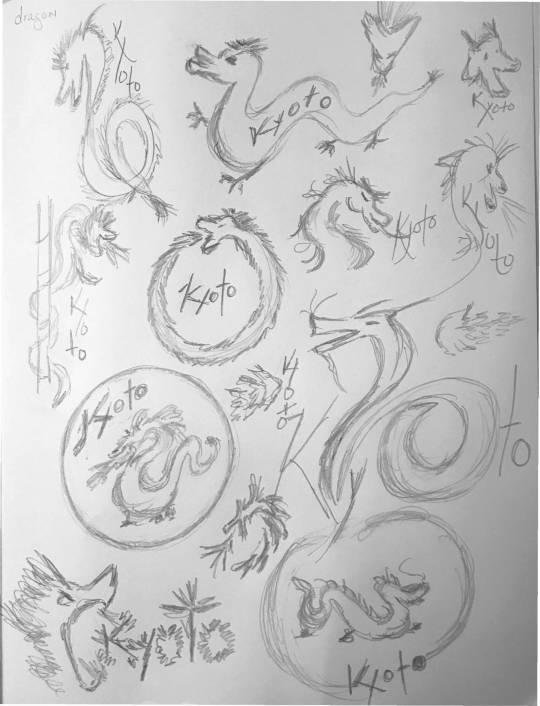
Kyoto, Japan: Modern Culture
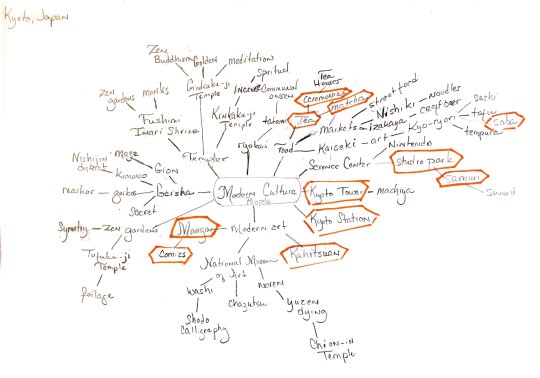
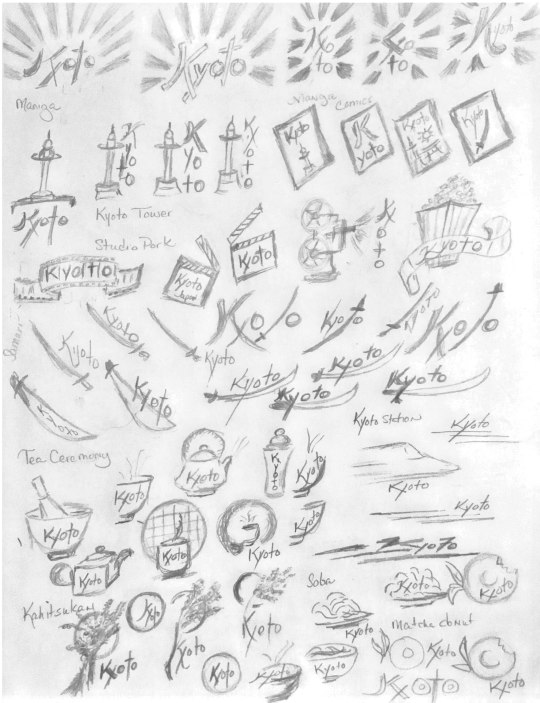
Sketch Revisions: Manga
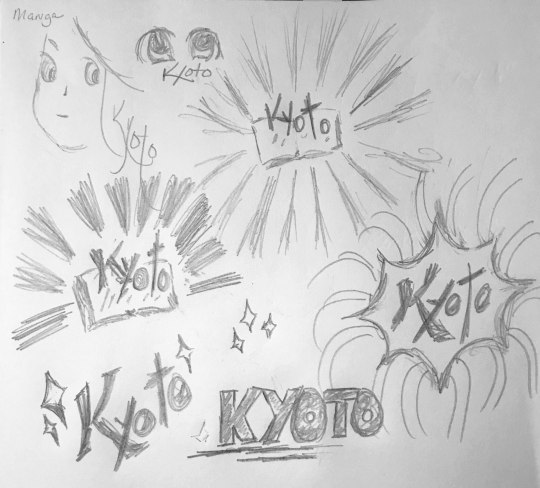
0 notes
Text
Week 1: Defining Client Needs
It is interesting, this weeks journal assignment is based on reflection for a discussion that didn’t end up happening. Which in and of itself is an important takeaway. Sometimes things happen, life gets busy, holidays come and go, work, family, personal life... happens. It is up to us to decide how to proceed when things don’t go as planned.
The live session we did have was fabulous and much appreciated. It went through this courses main project and told us exactly what to expect as we learn how to better define client needs and apply that education to the project.
I thing it is interesting that our project this month is based on a city and how to help the city attract visitors and become a recognized brand in the global market (depending on the cities strengths and offerings. I am excited to look at defining client needs in a different light, from a different angle. This is an interesting client and I think that it’s uniqueness will help open my mind to new ideas and ways to approach design and marketing in general.
0 notes
Quote
Companies don’t fail because they choose the wrong course—they fail because they can’t imag- ine a better one. Unimaginative leaders reach for a vision from the ready-made rack, then wonder why their leadership has no followship. Few people feel inspired by the safe and the easy. Starbucks founder Howard Schultz put it this way: “Who wants a dream that’s near-fetched?”
The Designful Company by Marty Neumeier
0 notes
Text
Defining Client Needs - Week Four
It has always been a dream of mine to use my skills of art to form a successful career. The course, Defining Client Needs, taught by Full Sail University professor, Laura Biase, has shed light on this dream and has given me the grasp of reality that this vision reveals. There were many great tools and skills that we learned throughout our tutorials that will be excellent design tips in the future. All of the tools and skilled obtained will assess me in both my future courses and career. However, I gained more insight off of the material we covered through readings and video lessons.
First, I learned that it is critical to balance both knowledge and creativity to be successful as a media designer today. For me, I have recently had a couple brain blocks down the avenue of creativity – however I have begun to bounce back. Knowledge is what I am obtaining now as I strive towards my Masters Degree. In regards to knowledge, it is extremely important as a designer to know as much as you can about your client and their consumers. I really enjoyed the video assignment in regards to Chase Design Group. Margo Chase states “We are not speaking to designers, we are not speaking to other businesses, we are speaking to consumers in most cases and we’ve got to really connect to them on a specific level” (Chase, 1:08) This quote has truly resonated with me and it is a reminder that I really need to focus just as much on the client and their needs as my designing beliefs.
The next major concept I learned throughout the course is the importance of “WHY.” Simon Sinek spoke during the conference, How Great Leaders Inspire Action and made it a point to embed this quote into the audiences mind; “People don’t buy what you do; they buy why you do it.” This concept is a major tool to remember especially when designing for companies. You don’t just want to have an attractive campaign for you client but your campaign must show meaning to draw in the new potential customers they are trying to reach. The YMCA did an excellent example of rebranding and following this concept. Their new campaign ensures to inform the community of what and why they choose to hold a strengthening impact on the community.
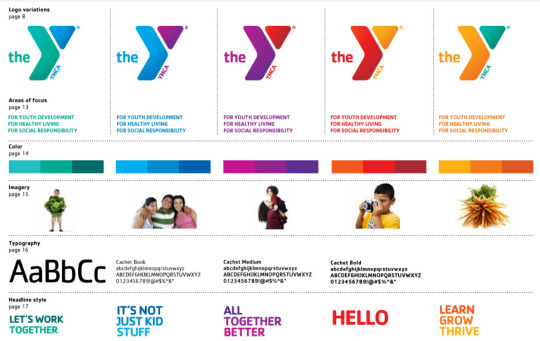
Finally, I gained the sense that even when planning towards a certain goal; you may not end up with the results you had originally hoped for and it is okay. I have never been one to create a sketch before starting a project, but the assignment involving creating multiple sketches and narrowing down to the best one to create a final poster was extremely eye opening. Even though my design did not come out on the screen as it had on paper, it is actually a good thing. Through trial and error experimentation, I found what truly worked for the design I had in mind. The final design, in my opinion, came out stronger than my original sketch I had created.
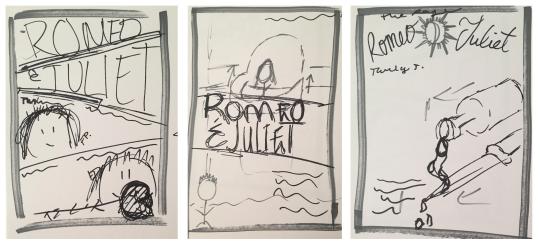
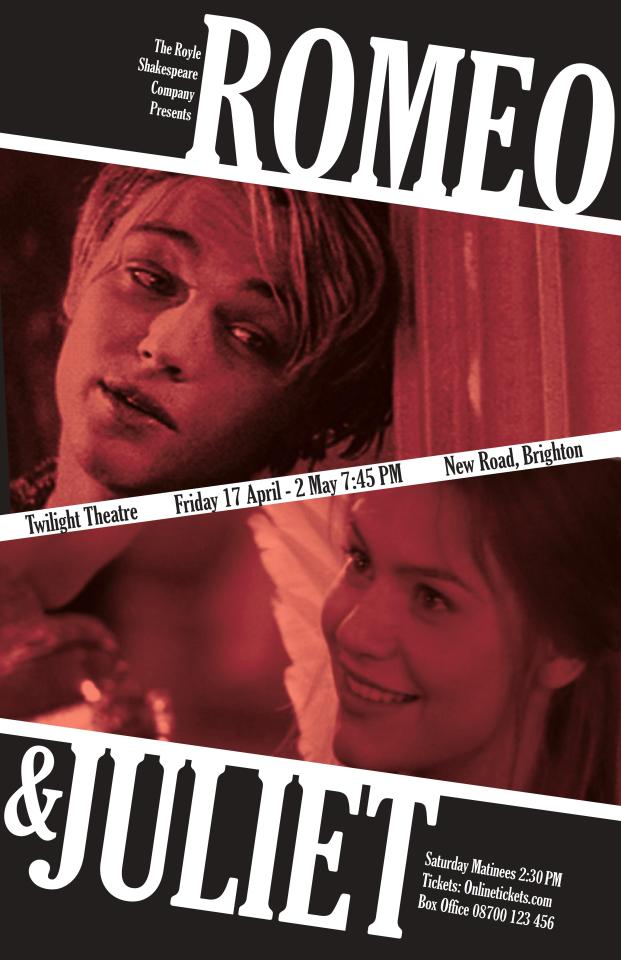
All in all, this course was extremely engaging at has helped me make the connection of art and business. Even though I have previously obtained a degree in Marketing, being able to apply it from a designer stand point was extremely helpful.
0 notes
Text
The 4th concept I'll take with me.
Managing customer expectations is another good point that I came across while reading M. Levens book "Marketing: Defined, explained, applied". While it wasn't a new concept for me, it's one that I have to deal with at work. When a customer's issue is presented to my department, it's important that the reps before me inform the customer of the turnaround time to be contacted. If they are misinformed then the customer's satisfaction is already decreased before my first interaction with them.
0 notes
Text
Defining Client Needs
Full Sail University - Master of Fine Arts Media Design Month 2: MDM525 August 3,2015 - August 30,2015
0 notes
Text
2.3.1 Reflection Post
This week’s readings provided even more insight into the world of designing in today’s work climate. The three concepts that stuck out to me the most this week were: what’s the motivation, customer value varies and art and business both need one another.
Sometimes I wonder if I’m an artist or just a lover of creative things. I have many creative interests and pursuits from poetry to photography and screen-printing to typography. Yet, although I do refer to myself as an artist I am also business minded which is why I feel as though I’m best suited for the field of Brand Management. Marty Neumeier made an important statement in his Design & Business interview when he said, “Business and design can work together and so we have to learn a common language and understand how each other works and start to knit those together. “ The blending of business and design is becoming a very common concept these days and while they will remain to be two separate disciplines, they will from now on be intertwined. Knowing how to be a designer that thinks like a business or vice versa will be a very important quality to possess; or at least if one can’t possess it, know how to listen and work with one’s counterpart.
When I first read MTIV: Process, Inspiration and Practice for the New Media Designer once thing that stuck out to me the most was Curtis’s evaluation on “what’s my motivation”? He explained,
“When meeting with a client, you need to ask yourself not only what they want, but what you want… if you acknowledge that every interaction, whether verbal or visual, is at its core driven by desire, then it makes perfect sense to use this as a tool.” (Curtis, 2002, p. 24)
I think that this was so thought provoking to me because it applies to all relationships in life, not just the one between a designer and their client. Yet, when thinking of it in terms of client and designer, it’s a very important thought process to take keep in mind before interactions with each other. Just as Curtis’ says, most times both parties will want the same thing, to use design in order to achieve a business need. If that fundamental thought is kept in mind then the process will go much smoother and be more efficient.
Customer value is definitely subjective. There are many ways to assess is although Levens approaches the subject from the perspective of which customer’s being in the most money. He described the 80/20 rule which says “80% of a company’s profits are generated by 20% of their customers. Another 60% of customers generate the reaming profits for a company.” From my own personal experiences in the working world I have seem this principle in action and will admit that I’ve thought the practice to be unfair at times. From an overall “moral” standpoint it may not make much sense, but from a business standpoint I can now understand how the practice is relevant. Leven’s further supported this argument when he touched on the point that it’s easier to keep an old customer than to create a new one. With this in mind then it makes perfect sense to cater to your top 20% of consumers in order to keep them happy.
References:
Curtis, H. (2002). MTIV: Process, inspiration, and practice for the new media designer. Indianapolis, Ind: New Riders.
Levens, M. (2010). Marketing: Defined, explained, applied. Upper Saddle River, NJ: Prentice Hall.
Ringling College of Art and Design (2010, April 2). Marty Neumeier Talks About Design + Business [Video file]. Retrieved from http://youtu.be/Zh9y_7bmQmc
0 notes
Text
2.3.1 Discussion Post
Sector 1: Health and Wellness – Organic and/or sustainable food sources
Four companies:
The Fresh Market Whole Foods Market Sprouts Farmers Market Supervalu
http://www.nasdaq.com/symbol/tfm/competitors [market cap]
Sector 2: Industrial and Fashion Design - Electronics
Four companies:
Kobo Glow
Kindle Paperwhite Nook Glowlight Kindle DX
http://ebook-reader-review.toptenreviews.com
Sector 3: Industrial and Fashion Design – Furniture
Four companies:
Baer’s
Williams - Sonoma Pier 1 Crate & Barrel
http://c.ymcdn.com/sites/www.ihfra.org/resource/resmgr/ft_thelist_nov12.pdf
1. Given the market sectors and the 4 companies that you chose within each sector, what client needs can you identify to justify each project? What benefit to consumers would be gained by pursuing the project?
The Fresh Market needs to increase their perceived customer value. There is a Fresh Market located here in Jackson, MS but they are generally viewed as being overpriced. I’ve only been in there a handful of times and while they do offer a variety of fresh foods, they too face the ever-present question of “is it worth this much?” I think that by raising the awareness of the products offered and the health benefits that this food can provide, it would in turn attract more consumers and prove to them that the money is actually being well spent. Eating these organic products would in theory also improve the customer’s health, which is a win-win for all parties involved.
Kobo Glow and Baer’s furniture both have the main same need, customer recognition. If you polled 100 people asking them who either company was, the amount of people that could actually identify each company would be lower than the amount that could identify its competitors. Curtis made a very good point when he said, “When meeting with a client, you need to ask yourself not only what they want, but what you want. And in my experience, it’s almost always the same thing.” (Curtis, 2002, p. 24) A rebrand for both of these companies would benefit the companies by providing a means to have a greater ROI by customer attention and retention.
2. Considering the competitive landscape in each sector, why would it be important to go beyond a redesign of the current brand identity of your selected companies?
The competitors for all of the brands that I chose are closely ranked, thus going beyond a rebranding of the identity alone is crucial in order to make them really stand apart from their competitors. Organic foods have become especially popular in light of the shift to local and fresh food in America. With this being the case, the emergence of chain “farmer’s market” type stores has increased. The Fresh Market is a relatively well-known store, depending upon where you live, but there are still giants out there that they have to face.
I hadn’t even heard of Kobo Glow before researching for this assignment; while I don’t know all of the eBook reader manufacturers out there I at least know of the three competitors that I listed so Kobo was already at a disadvantage. They appear to have a very good product however, so bringing brand awareness to their company and raising the customer value would be important for them. Levins states, “At the most basic level, buyers make a purchase decision based on the value they perceive a product will deliver.” (Levens, 2010, p. 47) Baer’s is a relatively small company in comparison to the competitor’s I’ve listed for them as well; their goal is to sale good quality furniture for discount prices. Rebranding their identity in order to reflect this mantra would be useful for them but so would making sure the company employees drove this point home to the customers in order to create a greater level of customer loyalty. “In short, you build customer loyalty by treating people how they want to be treated.” (Customer Loyalty, 2014)
3. What are some of the more obvious features or services that are shared between the competing companies in each sector? What are some potential strategies for differentiating your selected company’s brand from the others?
Well, the all fall within the same sector, which is the most obvious feature that they share. Aside from that, the features that The Fresh Market shares with its competitors are that they all are natural food sellers who are targeting the health conscious consumer. Focusing on their upscale, yet rustic charm may be a good starting method of differentiation for them. Kobo Glow is a relatively small, lightweight, multifunctional eBook reader, just like its competitors. While it does have the highest price point, it does offer a few things that the other eBook readers don’t such as Kobo Picks and Reading Life; “Kobo is definitely ahead of the curve in terms of social features on an eBook reader.” (TopTenReviews, 2014) Baer’s Furniture sells a variety of furniture from living room sets, to kitchens and outdoor areas. As mentioned previously, a big point of differentiation would be to focus on selling high quality furniture for bargain prices. Hillman quotes Steve Kazanjian who said, ‘You have to sell the product, otherwise the design is crap.’” (Curtis, 2002, p. 29)
References:
Levens, M. (2010). Marketing: Defined, explained, applied. Upper Saddle River, NJ: Prentice Hall.
Customer Loyalty (2014). What is Customer Loyalty? Retrieved January 21, 2014, from http://www.customerloyalty.org/what-is-customer-loyalty/
TopTenReviews (2014). Kobo Glo 2014 | Consumer eReader Comparison - TopTenREVIEWS. Retrieved January 21, 2014, from http://ebook-reader-review.toptenreviews.com/kobo-wireless-ereader-review.html
Curtis, H. (2002). MTIV: Process, inspiration, and practice for the new media designer. Indianapolis, Ind: New Riders.
0 notes
Text
2.1.1b Discussion Post
Planet Fitness
Industry Setting: Health and Wellness - Fitness Programs
Competition: 24 Hour Fitness Gold’s Gym Snap Fitness
Planet Fitness is a gym chain that has 390 locations in 40 states. (Levy, 2011). They have positioned themselves well in their niche of gyms but there’s always room for growth. The gym currently offers the basics of free weights, cardio machines, strength machines and a stretch room; which is why they can keep the prices so low. Having such cheap membership prices is one of the leading reasons that they have a growing company.
Many people think of Planet Fitness to be a “beginner’s gym”, so my primary objective would be to develop a separate facility that includes alternative exercise methods such as basketball and racquetball courts, a swimming pool and large rooms to hold specialized fitness classes that encourage group participation. I’m a member of a Planet Fitness class and the “personal training” that comes included with your membership is more of a free consultation; I would hire actual personal trainers who develop fitness and meal plans, perhaps for a nominal fee. This facility would be able to be accessed through a separate rate plan so it doesn’t raise the prices for those who aren’t interested and doesn’t require remodeling the existing facilities.
Game Stop
Industry: Industrial and Fashion Design - Electronics
Competition: Walmart Target Best Buy
Game Stop was a pioneer in video game sales but it has to compete with larger retail stores, online games and the fact that you can now purchase games directly from the console. Game Stop’s revenue has been declining over the past few years due to these reasons; “GameStop's total global sales during the seasonally potent holiday months of November and December fell 4.6% to $2.88 billion, bogged down by a 4.4% slide in comps.” (Munarriz, 2013).
I would play up the fact that with a physical copy of a video game you have the ability to trade it in for something else when you’re done playing with it, or just get cash back. This in turn allows for others to purchase a used game at a cheaper price. In addition to video games you would also be able to trade in game consoles. The name Game Stop implies that they sale games only, this is a misconception; they also sale phones, media players, tablets and laptops. I would better advertise these items through the various multi media channels and add televisions to the lineup. Purchasing games through the console also uses storage so if it’s something you want to continually do you have to purchase more cloud storage; yet another advantage to physical games.
Sauder
Industry: Industrial and Fashion Design – Furniture
Competition: Herman Miller Pier 1 Room and Board
Sauder is a privately owned, ready-to-assemble furniture company located in Archbold, Ohio (Sauder Woodworking Company, 2013); the fact that they are US owned and manufactured is a great selling point. I have purchased furniture from them and it’s very good quality furniture, especially for the price.
I would like to expand their marketing and get more retailers interested in them. One way to do this would be to market affordable retailers who have a market that includes young adults. The college and young adult sector, from about 17-30 would be the ones most likely interested in what Sauder has to offer.
Levy, P. (2011, January 3). Compare and Contrast: The Best Gym Membership for Your Money - DailyFinance. Retrieved January 10, 2014, from http://www.dailyfinance.com/2011/01/03/compare-and-contrast-the-best-gym-membership-for-your-money/
Munarriz, R. A. (2014, January 8). It Gets Worse, GameStop Investors - DailyFinance. Retrieved January 10, 2013, from http://www.dailyfinance.com/2013/01/08/it-gets-worse-gamestop-investors/
Sauder Woodworking Company (2013). About — Sauder Furniture. Retrieved January 10, 2014, from http://www.sauder.com/About/Home.aspx
0 notes
Text
2.1.1a Reflection Post
I know there are many career paths that I could take once I’ve completed my MDMFA but the one that is most interesting to me at the moment is Brand Management. I’ve always had an interest in the arts whether it is drawing, photography, making collages or editing video, thus I’ve always considered myself to be an artist. However, I’ve been in technical support for the past two years and I’ve learned something else about myself; I’m a very effective communicator. This revelation in combination with my love for the arts is what has driven me in the direction of Brand Management. Since Brand Management is my current focus, the three most important concepts that I took away from this week’s assigned materials are: research is a necessary part of the design process, always develop a target audience and humanity is integral for brand success.
Research hasn’t ever been a strong point of mine; I love to read but I prefer to read for pleasure instead of academia. My aversion to research has been both an advantage and a limitation to my creative process as a designer. On one hand I like feeling things out as I go and then having an “aha!” moment at the end and coming up with a great idea. On the other hand, it’s easier and less stressful to complete a project when you have a plan. What I’ve learned most from the reading and Chase Design Group interview is that although I may not like it, research is a vital part of the design process. Without the proper research I run the risk of coming up with superficial business solutions for my customers instead of in depth and innovative ways to promote their brand. One thing that probably gets overlooked often is analyzing the competitor. “Competitor analysis is the process of evaluating the strengths and weaknesses of an organization’s competitors.” (Visocky O’Grady 22) Not only is it important to know what your client’s business is doing, it’s important to know what their competition is doing because it could be a practice that they could implement into their business model or it could inspire you to go in a new direction.
One of the first steps in branding a company is to know whom are you branding yourself towards? In order to better serve your target audience you must first understand them, “Understanding the audience and the market is key to knowing both how design can creatively produce a viable business solution, and how marketing can respond to a design innovation to produce a viable business proposition. (Best 34) The concept reminds me of the Comcast Spotlight commercials that come on here in Jackson. They are basically saying that no matter your product, if it isn’t reaching your intended target audience then you are only hurting your bottom line. For example, ancestry.com would fare better airing their commercials on TNT than the Disney channel. Each product or service has a market, but that market can be geographic, demographic, psychographic or behavioral. (Best 35) Once you have narrowed down an audience though, it’s easier to steer the brand in the direction that will appeal most to its intended consumers.
My third and final concept for the week is that humanity is integral for brand success; in so many industries efficiency has replaced humanity. Competition is so much stiffer in the technology age because information is readily available at our fingertips. It’s easy for a business to get lost so in order to succeed they have to really stand out from the crowd.
Today we’re finding that innovation without emotion is uninteresting. Products without aesthetics are uncompelling. Brands without meaning are undesirable. And a business without ethics is unsustainable. The management model that got us here is underpowered to move us forward. (Neumeier 4-5)
Of course in any industry you need to make money to stay in business and to grow, but your customer’s are your most important assets. You have to provide a fresh idea in order to attract them and be even more outstanding in order to keep them. Some of old business principles that were practiced are becoming outdated with the influx of product availability and changes in consumerism. In order to keep up with the changing times, the companies themselves must adapt and above all remain humane.
References:
Visocky O'Grady, J., & Visocky O'Grady, K. (2006). A designer's research manual: Succeed in design by knowing your clients and what they really need. Gloucester, MA: Rockport Publishers.
Best, Kathryn. Design Management: Managing Design Strategy, Process and Implementation. AVA Publishing, 10/2006. VitalBook file.
Neumeier, Marty. The Designful Company: How to build a culture of nonstop innovation for Full Sail University. Pearson Learning Solutions. VitalBook file.
0 notes
